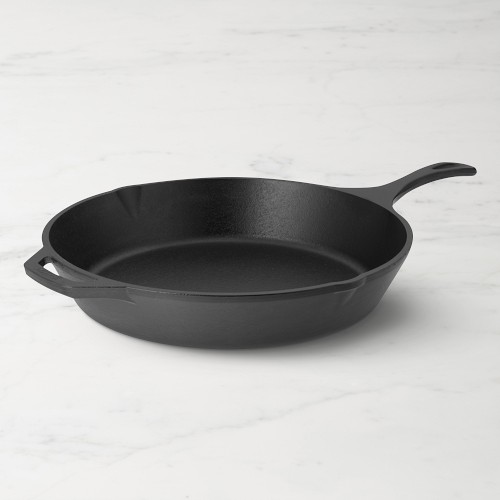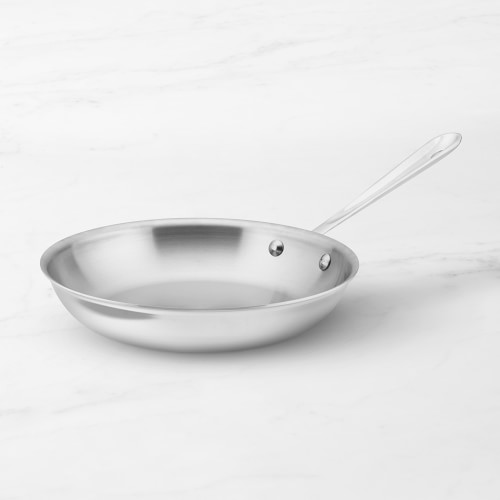
Pan frying, or cooking on the stovetop in a small amount of fat, is most often done in a fry pan. Also called skillets, these broad pans have sides that flare outward, making them useful for cooking foods that must be stirred often or slid from the pan.
To suit recipes of various sizes, it’s a good idea to have both a smaller fry pan measuring 9 to 10 inches (23 to 25 cm) in diameter, and a larger pan that’s 12 to 14 inches (30 to 35 cm in diameter). Successful pan frying also requires a heavy-bottomed pan that conducts heat evenly. Stainless steel, copper, anodized aluminum, cast iron and enameled cast iron are all good choices.
When small pieces of food are cooked in a small amount of fat, it’s often described as sautéing or stir-frying. The term pan frying typically refers to cooking larger pieces of fish, poultry or meat, which are sometime cut or pounded thin to keep the cooking time short. Vegetables can also be cooked in this way.
Since there is no water involved, pan frying is known as a dry-heat cooking method, like grilling and roasting. The dry heat and fat create appealing and delicious browning. As food browns, its juices concentrate and caramelize.
A variety of different fats can be used for pan frying. Canola and peanut oils are the most popular oils since they can stand up to the high heat necessary for pan frying. Olive oil and butter both add delicious flavor to dishes, but care must be taken not to overheat them or they will contribute burned or off flavors to a dish.
Recommended Products
-
$59.95
(96)

-
$149.95
(98)














